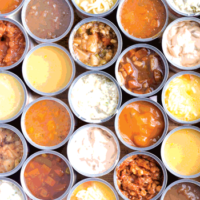It has long been said that food safety cannot be inspected into a product. This was a key element of why Hazard Analysis and Critical Control Points (HACCP) plans were developed by NASA, U.S. Army Natick Research Labs and the Pillsbury Company. In 1985, the National Academy of Sciences stated in its final report, “HACCP provides a more specific and critical approach to the control of microbiological hazards than is achievable by traditional inspection and quality control.”[1]
As a result, food safety is ensured by developing, implementing, managing and improving processes used to produce safe food. Process control strategies and validation are critical to build both quality and safety attributes into food processes and products. These are effective tools that form a systems approach, to ensure that safety is properly addressed in food production.
Validation and verification may be confusing subjects. Part of this confusion goes back to some of the original publications on HACCP. The National Advisory Committee on Microbiological Criteria for Foods (NACMF) states that validation is “that element of verification focused on collecting and evaluating scientific and technical information to determine whether the HACCP plan, when properly implemented will effectively control the hazards.”[2]
Over the years, food safety professionals have questioned whether validation is an element of verification.[3–5] Some food safety experts have proposed that verification should be a separate principle of HACCP, an eighth principle, so to speak. Recently, it was suggested that a new paradigm be considered that validating, monitoring and verifying form part of a continuum that addresses activities at different stages of the food manufacturing process.[5] Using this approach, food manufacturing is seen as a system. During the development of a food process, the focus is on validation. The goal of the organization is the development of a reliable process that can consistently manufacture safe food. Included in the design part is the evaluation and selection of suppliers. During this time, organizations are applying design principles, which include developing a food safety management system or HACCP plan. In addition, during the development and initial operational phases, the organization may conduct various validation studies. Once the process is fully operational, the organization ensure that the process is operating as intended. The requirements are described in either the food safety or HACCP plan. In addition, both during and after processing, the organization will also verify that requirements of either the food safety or HACCP plan have been fulfilled.
It is recommended that any time a discussion is initiated concerning validation and verification, the participants do not assume that everyone is using the same definitions for these terms. This is especially true when the discussions are with individuals not part of the immediate organization such as external auditors, customers, suppliers and regulators. Table 1[2,3,6,7] provides a series of definitions used with regard to food safety.
Validation and the FDA
Validation is not a new concept with respect to the U.S. Food and Drug Administration (FDA). Dr. Fred Shank stated in 1990 that FDA believed in the HACCP concept because “instead of relying on traditional inspections, our role in HACCP will be to review system parameters and operating procedures, to provide selective auditing of the system’s records, including verification by laboratory analysis, and provide for appropriate enforcement.”[8] In other words, they would be validating systems. In addition, FDA has required validation of pharmaceutical processes for over 30 years. Validation of pharmaceutical manufacturing processes has evolved over the years. The most recent documented pharmaceutical validation guidance was published in 2011.[9] In addition, there are books[10] and short courses offered on pharmaceutical validation.
FDA has taken an interesting approach to validation in the Preventive Controls for Human Food (PCHF) regulations. From the definition perspective, FDA still classifies validation as part of verification (Table 1[2,3,6,7]). However, from a rules perspective, FDA lists the regulations that cover verification and validation activities separately. Validation is covered in 21 C.F.R. 117.160. FDA states the following: “You must validate that the preventive controls identified and implemented in accordance with § 117.135 are adequate to control the hazard as appropriate to the nature of the preventive control and its role in the facility’s food safety system.” Verification is covered in 21 C.F.R. 117.155, and 21 C.F.R. 117 covers verification of implementation and effectiveness.
In 21 C.F.R. 117.160 (B)(1), the preventive control requires that the organization must complete the validation requirements within the first 90 days of production. In addition, the reanalysis of the food safety plan is required at least every 3 years in 21 C.F.R. 117.170. In a way, this is interesting in that both the seafood and juice HACCP regulations specifically state that HACCP plans are to be reassessed (or validated) annually. FDA is planning to publish guidance for validation of PCHF.[11]
The preventive controls regulation mandates that only process preventive controls must be validated. Examples of process preventive controls would be what are now deemed CCPs, that is, the times and temperature used to pasteurize milk, application of propylene oxide at a certain time, pressure and temperature to treat almonds or the continuous operation of a metal detector. According to the regulation, allergen, sanitation, recall and supplier controls do not have to be validated.
Validation Procedures
The amount of literature on the validation of food processes is starting to increase. Examples include the publication of documents to ensure the proper validation of the almond pasteurization process[12] and the publication of protocols to ensure the proper validation of low-acid canned food procedures.[13] In addition, the Codex Alimentarius Commission published a guideline for the validation of control measures.[6]
Numerous considerations must be taken into account when determining a validation protocol. These include:
• Understanding the sources of variation in ingredients, products and processes
• Detecting the presence and degree of variation
• Understanding the impact of variation on the process and on the product
• Controlling the variation in a manner commensurate with the risk to food safety
Codex6 identified the following three tasks that should be performed prior to the validation study:
1. Identify the hazards that are intended to be controlled
2. Identify the required food safety outcomes
3. Identify the measures that are to be validated
There are five recognized methods that can be used for validation.[6] They are:
1. Reference to scientific or technical literature, which can include validation studies or historical knowledge of the performance of the control measures
2. Scientifically valid experimental data that demonstrate the adequacy of the control measures
3. Collection of data during operating conditions of food production
4. Mathematical modeling
5. Surveys
FDA does not recognize surveys as a method to validate a food safety plan.[14] Surveys can be used to validate the clarity of food safety instructions that are incorporated into the product label.
The food industry in the United States and in other parts of the world is examining traditional processes, such as baking, to determine whether these processes are effective at reducing pathogens. The American Institute of Baking has conducted work on products such as breads and cakes and published that work. Large processors are also looking at their processes, especially with more complex products such as breakfast bars and cookies that contain inclusions like nuts and chocolate chips.[15]
All Global Food Safety Initiative and FDA food safety management schemes require periodic reassessment of food safety plans. Again, this process can be described in several ways, including “revalidation,” “reassessment” or “reanalysis.” We recommend that either reanalysis or reassessment be used. The reanalysis of the food safety system is designed to determine whether the food safety or HACCP plan is operating as intended, and a review of records is conducted to determine whether the food safety plan is being followed. As part of this latter effort, the evaluation should be designed to determine whether any negative trends are occurring. Issues uncovered during this review may lead the organization to conduct new validation studies. The following activities should be reviewed as soon as possible to determine whether a new validation study is necessary:
• Significant change in the product
• Significant change in the process
• New information on hazards in the food
• A change in a supplier
• A change in a raw material
• A significant change in the organization’s management
• Unanticipated problems
• Reoccurrences of problems
• Failure to identify the actual root cause of a problem
• Preventive control was not effective
• New distribution methods
• New consumer handling practices
• Any other adverse findings or problems
Conclusions
Validation is becoming a standard practice throughout the food industry. One major issue that still needs to be resolved is: “How do you validate a process that runs on old equipment?” This may not be a simple task since the equipment was not designed for process-validation studies. In addition, there must be some codification of the method used to validate products and processes. It is expected that the validation literature will increase in the future and professional societies will address methods to ensure adequate, appropriate validation.
John G. Surak, Ph.D., is the principal of Surak and Associates.
Richard F. Stier is a consulting food scientist.
References
1. National Academy of Sciences. An Evaluation of the Role of Microbiological Criteria for Food and Food Ingredients (Washington, DC: National Academy Press, 1985).
2. National Advisory Committee on Microbiological Criteria for Foods. 1998. “Hazard Analysis and Critical Control Points and Application Guidelines.” J Food Prot 61:762.
3. International Organization for Standardization. 2005. “ISO 22000:2005 Food Safety Management Systems—Requirements for Any Organization in the Food Chain.” Geneva, Switzerland.
4. Brackett, RE et al. 2014. “Validation and Verification: A Practical, Industry-Driven Framework Developed to Support the Requirements of the Food Safety Modernization Act (FSMA) of 2011.” Food Prot Trends 34:410.
5. www.food-safety.com/magazine-archive1/augustseptember-2014/a-new-paradigm-for-validation-verification-and-monitoring/.
6. Codex Alimentarius Commission. 2008. “Guidelines for the Validation of Food Safety Control Measures, CAC/GL69-2008.” Geneva, Switzerland.
7. www.federalregister.gov/documents/ 2015/09/17/2015-21920/current-good-manufacturing-practice-hazard-analysis-and-risk-based-preventive-controls-for-human.
8. Shank, F. 1990. “The Safety of the Food Supply in the Nineties.” J Assoc Food Drug Officials 54(4):33.
9. www.fda.gov/downloads/drugs/guidancecomplianceregulatoryinformation/guidances/ucm070336.pdf.
10. Haider, SH. Validation Standard Operating Procedures, 2nd ed. (New York: Taylor and Francis, 2006).
11. www.fda.gov/Food/GuidanceRegulation/FSMA/ucm334115.htm.
12. www.almonds.com/processors/processing-safe-product#tc-pasteurization.
13. www.iftps.org/protocols.html.
14. www.ifsh.iit.edu/fspca/fspca-preventive-controls-human-food.
15. Gorton, L. 2015. “Prove it.” Baking and Snack November:91.




